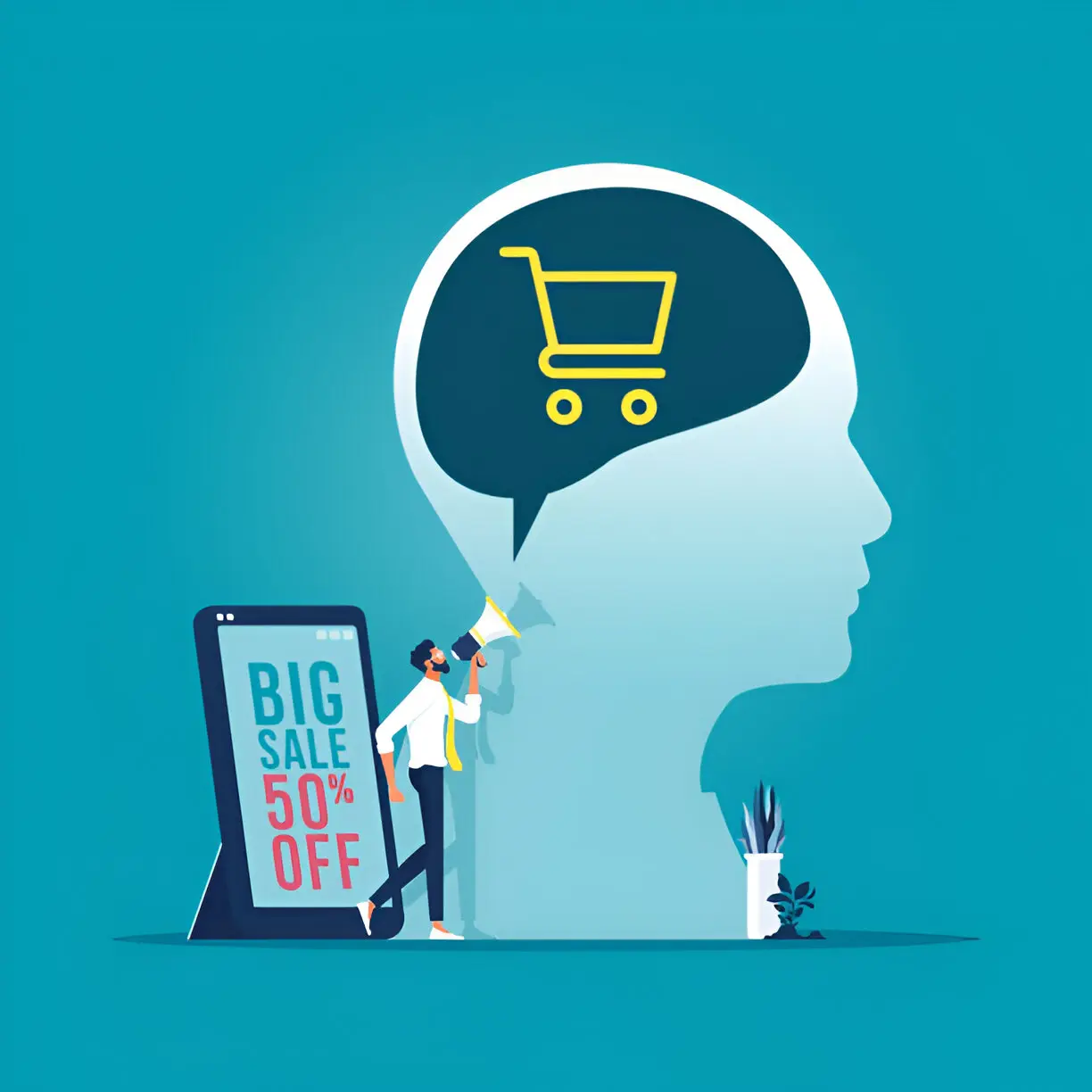Walk into any modern retail store and you’ll notice something interesting, certain products seem to catch your attention instantly, while others fade into the background. This isn’t by accident. Retailers use specific visual and psychological cues to influence buying decisions, and one of the most powerful among them is product placement.
When done right, product placement in retail stores doesn’t just make shelves look organized; it actively guides customers toward certain products, boosting visibility, preference, and ultimately, sales. And with the help of data and analytics, brands can now decode what’s working and refine their placement strategies for even better results. That’s where product display insights come in; they help retailers figure out how shelf design impacts consumer choices and what tactics are worth repeating.
Why Product Placement Affects Shopper Behavior
How a product is positioned on the shelf influences everything, from how often it gets noticed to how likely it is to end up in the shopping cart. The brain processes thousands of visual cues in a retail setting, and subtle layout changes can push consumers toward one product over another without them even realizing it.
Eye-Level = Buy-Level
Shoppers typically gravitate toward items placed at eye level, between 45 and 60 inches from the floor. These positions account for the bulk of product sales, which is why brands strive for visual prominence in those zones.
Products placed on the middle shelf can capture up to 7.5% of total category sales, compared to just 3.3%–4.4% for top or bottom shelves. This makes shelf height a critical factor in shelf strategy.
Endcaps Drive Impulse Buys
Products positioned at the end of aisles catch attention because they sit in high-traffic pathways. These spots aren’t necessarily where people go to find something specific, but they are exactly where many unplanned purchases happen. That’s what makes endcaps so powerful.
In fact, one retail study found that endcap displays increased sales by 23.2% for beer, 33.6% for wine, and a massive 46.1% for spirits, compared to traditional shelf placements. This kind of uplift shows how the right positioning alone, without price cuts or extra advertising, can drive real revenue gains.
Brands often use endcaps to introduce new products, highlight seasonal items, or support limited-time promotions. Because they command attention with minimal shopper effort, they’re some of the most effective retail real estate available.
The Influence of Comparison and Anchoring
When shoppers see a premium item placed next to a lower-priced one, they tend to view the latter as a “smart buy.” This is due to anchoring bias, the brain uses the first piece of information it sees (in this case, price or packaging) as a reference point.
Familiarity Breeds Loyalty
The more often shoppers see a product in a consistent location, the more comfortable they feel choosing it. This sense of predictability fosters brand loyalty and drives repeat purchases over time.
Types of Product Placement Strategies
Retailers use a variety of placement strategies depending on product type, store format, and shopper behavior. Each approach serves a distinct purpose and targets specific consumer reactions.
Prime Shelf Space
This refers to areas like eye-level shelves, high-traffic zones near store entrances, and key power aisles. Products in these locations get more visibility and often experience higher conversion rates. Brands use this space to feature core SKUs or bestsellers.
Block Placement
Grouping similar items, by brand, size, color, or function, makes it easier for shoppers to compare and choose. This type of placement also helps create a stronger visual presence for brands, giving them dominance in their category.
Thematic and Seasonal Displays
Temporary setups aligned with holidays, local festivals, or trending events (like sports seasons) draw attention by creating a sense of urgency. Shoppers respond to these emotional triggers by making quicker, often unplanned, decisions.
Complementary Product Placement
When products that are typically used together are placed side by side, like chips and salsa or razors and shaving foam, shoppers are nudged toward buying both. This approach subtly increases basket size by appealing to use-case thinking.
How Placement Shapes Customer Decisions
Product placement doesn’t just influence what people buy; it shapes how they feel during the shopping experience. When items are easy to find and well-organized, shoppers feel confident and in control. That positive experience often leads to larger purchases and increased brand trust.
It Drives Awareness First
The most basic goal of product placement is to get noticed. If an item isn’t in a shopper’s field of vision, it’s practically invisible. Smart placement ensures top-performing SKUs are seen early and often.
It Reduces Decision Fatigue
A cluttered shelf with no clear organization can overwhelm customers. Grouped and structured displays reduce mental effort, helping shoppers make quicker decisions and avoid walking away empty-handed.
It Triggers Emotional Responses
Placement next to comfort items or in themed zones can tap into deeper emotional cues. Whether it’s nostalgia during festive seasons or curiosity about a new launch, these feelings often lead to action.
It Reinforces Brand Memory
When shoppers can consistently find a product in the same spot, it strengthens brand recognition and builds a habit loop: see it, grab it, buy it.
Measuring the Effectiveness of Product Placement
To optimize shelf strategy, retailers and brands must go beyond intuition and track what actually works. That means collecting and analyzing data related to visibility, sales, and engagement.
Sales Uplift
Compare sales before and after a placement change. A steady increase usually indicates that the new position is working, especially if there’s no additional promotion involved.
Dwell Time and Engagement
Monitoring how long customers linger in front of a product section gives clues about interest and consideration. More time generally suggests higher engagement, which often translates to better sales performance.
Planogram Compliance
Even the best layout strategy fails if stores don’t follow the plan. Tools that track compliance via shelf images can flag incorrect placements. When key items drift from prime zones, sales can drop by 7–8%, according to field data.
Basket Size Analysis
If a new placement strategy leads to customers buying additional, related products, that’s a sign it’s working. A rise in average basket value often ties directly to better cross-merchandising.
Technology’s Role in Smarter Placement
With so many variables in play, technology helps take the guesswork out of shelf strategy. Retailers now use AI, computer vision, and real-time analytics to track, analyze, and refine product placement across locations.
Image Recognition for Shelf Audits
AI tools can scan images of store shelves and instantly report on missing items, misplacements, and shelf gaps. This speeds up compliance checks and reduces reliance on manual audits.
Augmented Reality for Store Staff
AR overlays help store employees follow planograms by visually showing them where each product should go. This simplifies resets and reduces errors during restocking.
Central Dashboards for Retail Managers
Modern dashboards combine visual data with sales performance and compliance scores, giving category managers a clear view of what’s working and where changes are needed.
A/B Testing Layouts at Scale
Brands can roll out two different placement strategies in similar stores and track which performs better. With the help of AI, this feedback loop is faster and more reliable than traditional pilots.
Examples of Placement Strategy in Action
Real-world examples show just how much of an impact thoughtful product placement can have on sales and shopper engagement.
Beauty Brands
Makeup and skincare brands often depend on first impressions. One brand reported a 12% increase in conversions after simply moving its flagship products to an eye-level shelf in a better-lit aisle.
Beverages and Snacks
An energy drink brand placed its new product in coolers near checkout counters instead of the standard beverage aisle and saw a 15% lift in trial purchases within two weeks.
Grocery Chains
By grouping baking products in a themed display during the holiday season, a large grocery chain saw an 8% rise in add-on purchases for those items.
Electronics
Retailers placing accessories next to smartphones, like earphones and chargers, boosted average basket value by up to 12%, especially in locations with guided demo setups.
Common Challenges in Executing Good Placement
Even the most well-planned strategies face hurdles on the store floor. From execution gaps to logistical issues, staying consistent takes effort.
Too Many SKUs, Not Enough Space
Retailers must balance variety with clarity. A crowded shelf may offer more options, but it can overwhelm shoppers and reduce sales for top-performing items.
Inconsistent Execution Across Locations
What works well in one store may not be executed properly in another. That’s why having tools to track and enforce planogram compliance is so important, especially across large store networks.
Resistance from In-Store Teams
Store staff are busy and under pressure. If a placement strategy is hard to understand or time-consuming to execute, it’s more likely to get skipped or done incorrectly.
Misalignment Between Retailer and Brand Goals
Brands want visibility; retailers want efficient category management. Placement plans need to strike a balance between promotional goals and in-store practicalities.
The Future of Product Placement
Product placement is evolving beyond printed planograms. The next wave will be even more dynamic, personalized, and driven by real-time data.
- Digital Shelves and Smart Labels: Screens and electronic shelf tags that adjust content based on traffic and time of day.
- AI-Powered Layout Recommendations: Automatically suggesting new placements based on past performance and shopper flow.
- Camera-Based Monitoring: In-store cameras track shopper movement to optimize placement in real time.
- Sustainability-First Layouts: Giving priority shelf space to eco-friendly brands in response to rising consumer demand.
Conclusion
Product placement isn’t just about filling shelves; it’s a powerful strategy rooted in shopper psychology and behavioral science. From grabbing attention to reinforcing loyalty, smart shelf layouts influence every step of the buying journey.
With a better understanding of product placement in retail stores and the tools to track it, retailers and brands can boost performance without adding more promotions or cutting prices. By aligning strategy with real-time insights, they turn shelf space into one of their most valuable business assets.
Also Read-Creative Programs for Building Life Skills










